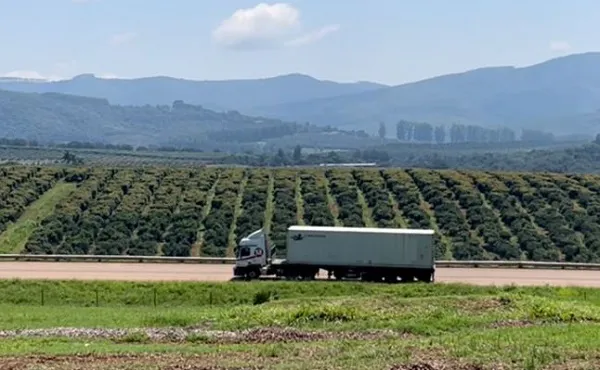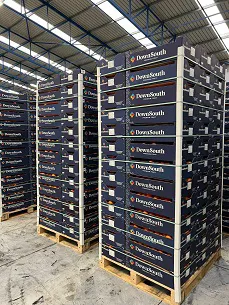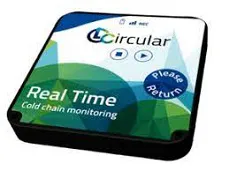After twenty years of fine-tooth combing the cold chain for weak links and fixing them, working with fruit exporters from Ecuador, Chile, Ghana, Mozambique and South Africa, Andy Connell, logistics and cold chain consultant, maintains that it’s time for receivers and retailers to do their bit.
“I’ve been gathering cold chain data since 1998 and at that time, we found that our discipline in the fruit industry, in SA and everywhere else, was not very good. Cold chain management is something people talk about but it’s something they don’t do: they put temperature monitors in, but then they don’t look at the data, find the weak spots and improve upon them.”
He remarks that Southern Hemisphere exporters have over the last ten years worked really hard on its cold chain discipline (for instance through the appointment of people whose sole job is to manage the cold chain), but there’s visibility only up to the destination port.
 "Southern Hemisphere exporters have over the last ten years worked really hard on its cold chain discipline"
"Southern Hemisphere exporters have over the last ten years worked really hard on its cold chain discipline"
Secretly monitoring the last mile: “What we found was shocking”
“Over the past twenty years we really improved the cold chain practices out of South Africa, Ghana and Ecuador but we still had fruit arriving with a lot of waste. So, supporting Prof Malcolm Dodd who was heading the Post Harvest Innovation Programme, we started putting hidden monitors in for the last mile and what we found was shocking: there were many events where temperatures went up in the care of the receiver.”
Normally, as a matter of course, temperature monitors are removed by receivers, “and that’s where the sins of omission happen”, he says.
“The big problem you have to address, the elephant in the room, is confronting the receivers and telling them: you can no longer just blame poor condition on the supply chain. That has all improved and shippers are looking after the cold chain.”
He continues: “So what’s happening is: when the consignment arrives, you don’t know what’s happening to it and they’re not going to tell you. And if there’s something they don’t like, they just claim from the origin.”
An example of what could be happening to the fruit is transporting the fruit as part of a mixed delivery to distribution centres or retailers.
“Now the lorry on its daily run has picked up some flowers, some potatoes, some bananas, all set at 8°C. You’re putting avocados or stonefruit into cold trucks together with potatoes which are exuding ethylene at a high rate, and you’re mixing climacteric with non-climacteric fruit, doing multiple drops,” he explains. “Certainly climacteric should not be mixed with non-climacteric fruit.”
Or it’s transported in a normal truck, not a refrigerated truck as agreed upon.
He points out that some receivers are careful, attempting to put fruit into storage variety by variety, while others are indiscriminate, but it’s common practice in the UK and Europe to send a truck to a crossdock facility to collect a quota on demand.
Some European retailers dead set against being tracked
The receivers who realised that they themselves were being monitored as part of cold chain innovation, told them to stop, confiscated the declared temperature monitors and wouldn’t release the data.
“When we took it up with them, they forbade us to put the monitors in unless we’d give them notice in advance and they wouldn’t give us the monitors because we’ve now unzipped their fly,” he says. Andy started visiting receivers to find out what happens to containers containing fruit from the Southern Hemisphere: South African, Peruvian and Chilean, bananas from Ecuador, Costa Rica and Ghanaian bananas.
Andy started visiting receivers to find out what happens to containers containing fruit from the Southern Hemisphere: South African, Peruvian and Chilean, bananas from Ecuador, Costa Rica and Ghanaian bananas.
Right: the cold chain on the exporting side is well-monitored
He saw that when a container gets unloaded at a crossdock facility, that’s where it stops, and receivers have boxes full of discarded temperature monitors (only 25% of monitors are ever recovered, he notes).
More exporters insist on last mile monitoring
The use of temperature loggers in containers varies: some exporters put one in every single container, others put one in every twentieth. Some only put it into shipments that they know are weak, Andy says.
“Too many exporters put in temperature monitors as a rabbit’s foot in case you get an insurance claim.”
There are now, he notes, some exporters who are actively looking into the last mile. When fruit arrives, an import agent puts in another monitor before it goes out for delivery, without telling the receivers. New generation temperature monitors can be tucked deep within fruit and still get a cellphone signal out. “They can then go the receiver and say listen, here are the temperatures. Please look after it better, and don’t blame the origin. It certainly influences people’s behaviour,” he remarks.
“They can then go the receiver and say listen, here are the temperatures. Please look after it better, and don’t blame the origin. It certainly influences people’s behaviour,” he remarks.
Right: a CLCircular temperature monitor
“Nowadays the cold chain is much better managed. People know what the temperature was when they loaded it, they know where their fruit is. Producers are becoming a lot more invested in the cold chain and they want to see the temperature graphs which means the shipper has to pay a lot more attention to the cold chain. Producers are asking for the same transparency and visibility that’s demanded from them and they are pushing back against getting reductions in price.”
For more information:
Andy Connell
A-Bar-C Services
Tel: +27 83 678 0072
Email: [email protected]
